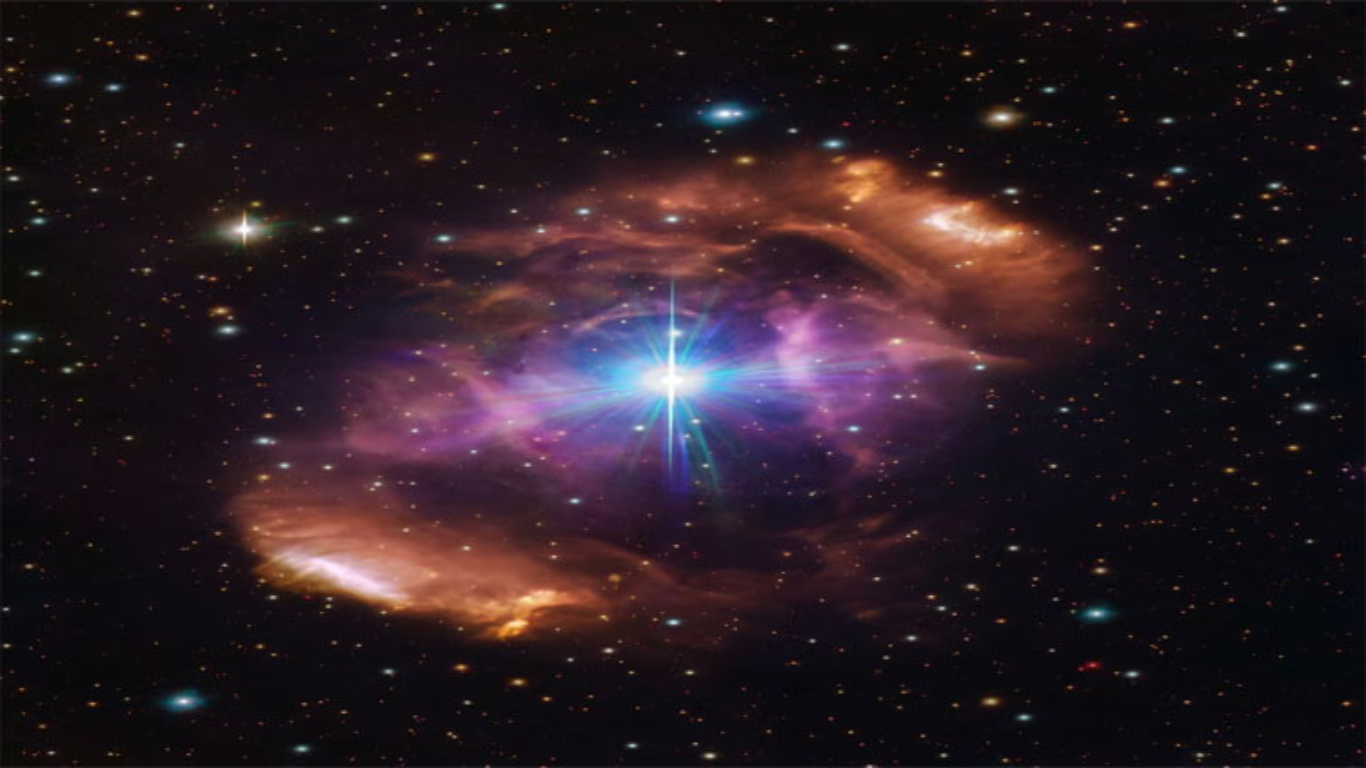Astronomical Puzzle: Unraveling the Mystery of the “Dragon’s Egg” Nebula
Astronomers have long been puzzled by the enigmatic nature of two massive stars nestled within the breathtaking cloud of gas and dust dubbed the "Dragon's Egg" nebula. While one of these stellar giants boasts a magnetic field akin to our sun, its celestial companion does not.
This peculiarity, coupled with the association of massive stars with nebulae, has left researchers intrigued. However, a recent study has shed light on this cosmic conundrum, revealing insights into how these rare massive stars acquire magnetic fields.
⚠️ ASTRONOMERS UNRAVEL THE MYSTERY OF THE 'DRAGON'S EGG' NEBULA
Full Story → https://t.co/U9C5mm35qm
Two large stars residing inside a spectacular cloud of gas and dust nicknamed the "Dragon's Egg" nebula have presented a puzzle to astronomers. One of them has a magnetic… pic.twitter.com/BSfelEO6xI
— PiQ (@PiQSuite) April 11, 2024
Source: Twitter/Piq
Stellar Fratricide: The Key to Understanding Magnetic Fields
Lead author of the study, Abigail Frost, an astronomer at the European Southern Observatory in Chile, suggests that the solution to this astronomical puzzle lies in a process known as "stellar fratricide."
This phenomenon occurs when a larger star consumes its smaller sibling, leading to the mingling of their stellar materials and the subsequent formation of a magnetic field.
Frost speculates that the merger between these stars was likely a violent affair, with material being expelled, potentially giving rise to the nebula observed today.
Observations and Findings
Utilizing data spanning nine years from the Chile-based Very Large Telescope, researchers delved into the intricacies of this celestial spectacle. The magnetic star, with a mass approximately 30 times greater than that of the sun, is paired with a companion star still holding a substantial mass, around 26.5 times that of our sun.
These two stars, gravitationally bound in a binary system, reside within our Milky Way galaxy, approximately 3,700 light-years away from Earth in the Norma constellation.
The Origin of the Dragon’s Egg
Named for its proximity to the larger nebula complex, the "Fighting Dragons of Ara," the Dragon's Egg nebula is believed to have originated approximately 4-6 million years ago.
Initially forming as a triple system, the stellar ensemble consisted of two primary members: a larger star, potentially 25 to 30 times the mass of the sun, and a smaller companion, possibly ranging from five to 10 times the sun's mass.
Cosmic Collision: Recent Revelations
The merger event that led to the formation of the Dragon's Egg nebula occurred relatively recently on a cosmic time scale, approximately 7,500 years ago.
This cosmic upheaval resulted in the expulsion of gas and dust into space, giving rise to the visually striking nebula we observe today. Notably, the nebula boasts a heightened presence of nitrogen, a consequence of the merger between the stellar siblings.
Magnetic Marvels: Understanding Stellar Dynamics
While the generation of magnetic fields in stars akin to our sun is well-understood, the process becomes more intricate for massive stars exceeding eight times the mass of our sun.
However, approximately 7% of these massive stars are known to possess magnetic fields, a phenomenon elucidated by the stellar fratricide scenario. Stellar magnetic fields harbor immense energy and play a pivotal role in celestial phenomena, from the formation of captivating auroras to potential disruptions of radio signals and navigation systems.
Visual Spectacle: The Beauty of Cosmic Dynamics
Accompanying the study is a captivating image of the Dragon's Egg nebula, showcasing the intricate interplay of physics and chemistry within this cosmic wonder. Hugues Sana, the senior author of the study and an astronomer at KU Leuven in Belgium, marvels at the beauty of the nebula, highlighting the richness of its underlying dynamics.
The unraveling of the mystery surrounding the Dragon's Egg nebula offers a fascinating glimpse into the dynamic processes shaping our cosmos. From violent stellar mergers to the formation of magnetic fields, this celestial spectacle serves as a testament to the intricate tapestry of the universe.
Read more such news on techinsighttoday
Thank you so much for reading.

